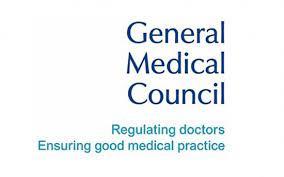Hair loss is a common concern affecting millions of men and women worldwide. It can be a gradual thinning or a sudden patch, impacting not just your appearance but also your self-esteem. The good news is, you’re not alone! Fortunately, there are numerous hair loss solutions available, ranging from minimally invasive treatments to more permanent surgical options.
This blog delves into the world of hair loss solutions, empowering you to understand the options and find the approach that best suits your needs.
Understanding the Root of the Problem: Causes of Hair Loss
Before exploring solutions, let’s shed light (pun intended) on the common culprits behind hair loss:
- Genetics: Hereditary hair loss, also known as androgenetic alopecia, is a major player. It’s influenced by genes passed down from parents and typically manifests as male pattern baldness or female pattern hair thinning.
- Hormonal Fluctuations: Changes in hormone levels, such as those experienced during pregnancy, childbirth, menopause, and thyroid disorders, can disrupt the hair growth cycle and lead to temporary or permanent hair loss.
- Stress: Chronic stress wreaks havoc on your body, including your hair. Stress hormones can shorten the hair growth phase, leading to shedding and thinning.
- Medical Conditions and Treatments: Certain medical conditions and their treatments, like chemotherapy or autoimmune diseases, can cause hair loss as a side effect.
- Nutritional Deficiencies: A lack of essential vitamins and minerals like iron, biotin, and protein can contribute to hair loss.
- Scalp Issues: Scalp conditions like psoriasis, seborrheic dermatitis, and fungal infections can create an unhealthy environment for hair growth, leading to hair loss.
- Lifestyle Habits: Smoking, excessive hairstyling with tight braids or ponytails, and using harsh chemical treatments on your hair can all contribute to hair loss.
Exploring the Solutions: Finding the Right Fit
Hair loss solutions are not a one-size-fits-all approach. The best option for you depends on the underlying cause, severity, and your personal preferences. Here’s a breakdown of some popular options:
Medications:
- Over-the-counter Minoxidil (Regaine): This topical solution is clinically proven to slow down hair loss and promote new hair growth. It requires consistent application and may take several months to show results.
- Prescription Finasteride (Propecia): This medication for men works by blocking the conversion of testosterone into DHT ( dihydrotestosterone) a form that can damage hair follicles. It’s important to note that it can have side effects and requires a doctor’s prescription.
Minimally Invasive Treatments:
- Laser Therapy: Low-level laser therapy involves using concentrated beams of light to stimulate hair growth. Studies suggest it may be beneficial for some types of hair loss, but further research is needed.
Surgical Solutions:
- Hair Transplants: This surgery involves transplanting healthy hair follicles from a donor area of the scalp to a bald or thinning area. It’s a permanent solution, but it can be expensive and requires a skilled surgeon. There are two main techniques: Follicular Unit Transplantation (FUT) and Follicular Unit Extraction (FUE).
Alternative Techniques:
- Scalp Micropigmentation: This non-surgical technique uses cosmetic tattooing to create the illusion of a thicker hairline or a fuller scalp. It’s a good option for those who are not suitable candidates for hair transplants or prefer a less invasive approach.
Lifestyle Modifications:
- Diet: Ensuring a balanced diet rich in essential vitamins and minerals like iron, zinc, biotin, and protein can promote healthy hair growth from the inside out.
- Stress Management: Finding healthy ways to manage stress, such as yoga, meditation, or deep breathing exercises, can help create a more favorable environment for hair growth.
- Addressing Underlying Conditions: If your hair loss is linked to a medical condition, treating the root cause can often reverse or slow down hair loss.
Consulting a Professional:
Remember: It’s crucial to consult a dermatologist or trichologist (hair loss specialist) to determine the cause of your hair loss and discuss the most suitable treatment options for you. Early diagnosis and intervention can often yield the best results.
Beyond Hair Loss: Reclaiming Your Confidence
Hair loss can be a daunting experience, but it’s important to remember that you have options. By understanding the causes and exploring the solutions available, you can take charge of your hair loss journey. Whether you choose medication, surgery, a natural approach, or a combination, there’s a path forward to regaining a thicker, healthier head of hair and, more importantly, your confidence.
Read More Informative Topics :-






